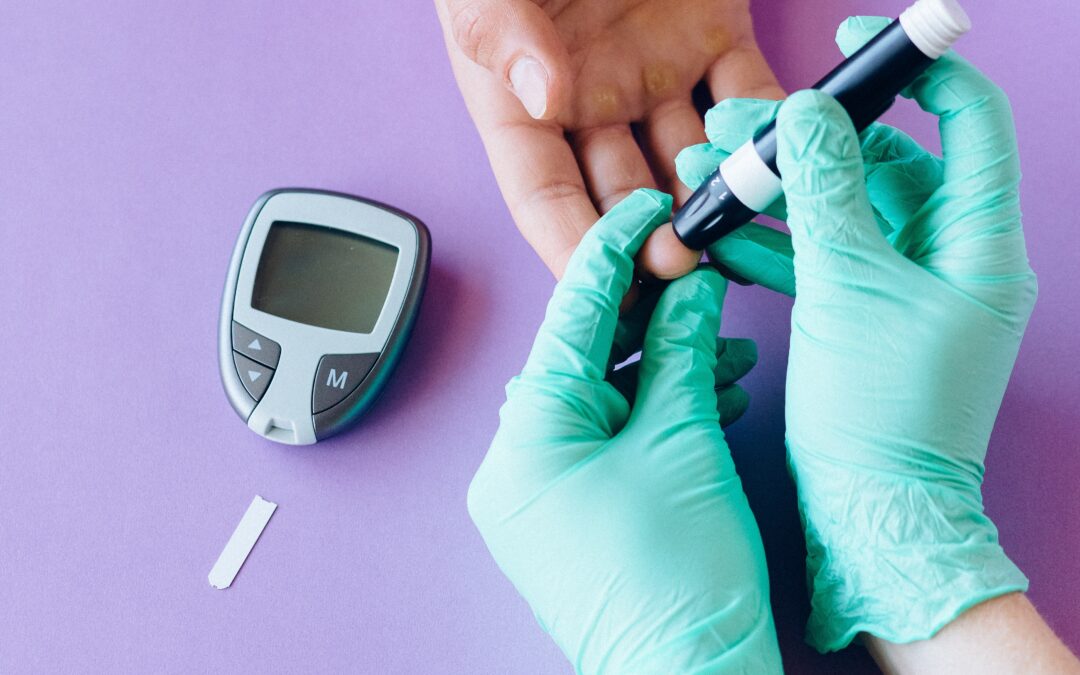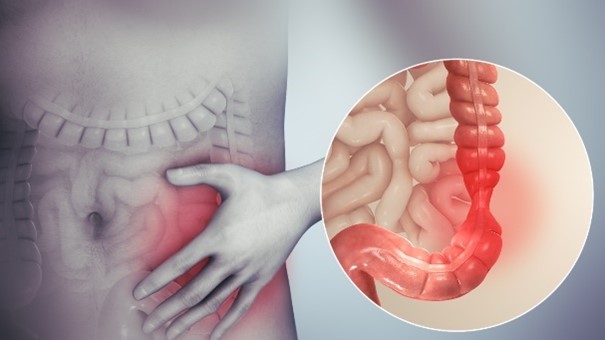
by Belinda | Jul 11, 2022 | Health Assessments, Workplace Education
This year, the national diabetes week runs from 10 – 16 July 2022. This year, the ‘Heads Up on Diabetes’ campaign, Diabetes Australia will be focusing on challenging diabetes related stigma.
Research conducted by the Australian Centre for Behavioural Research in Diabetes (ACBRD), found that four out of five people living with diabetes have experienced stigma at some point. This National Diabetes Week let’s have a conversation about the real impact diabetes stigma can have on a person’s mental and emotional wellbeing. (Source : Diabetes Australia 2022.)
What is diabetes?
According to the Australian Institute of Health and Welfare (AIHW), diabetes is a chronic condition marked by high levels of glucose in the blood. It is caused either by the inability of the body to produce insulin (a hormone made by the pancreas to control blood glucose levels) or by the body not being able to use insulin effectively, or both.
Glucose, also known as blood sugar, is the main source of energy for our bodies. Your blood glucose levels are normally controlled by a hormone called insulin, which converts glucose into energy. Diabetes occurs when the hormone insulin, which assists in the conversion process, is not produced, or is produced to insufficient amounts by the body. For diabetics, when they eat glucose (such as breads, cereals, fruits and starchy vegetables), it cannot, or it is inadequately converted to energy.
There are 4 types of diabetes:
Type 1 – Also known as juvenile diabetes, auto-immune diabetes.
Type 1 diabetes is an autoimmune disease. The immune system is activated to destroy the pancreatic cells, where insulin is produced. It’s unknown what triggers this destruction.
Type 2 – This occurs when the pancreas loses the capacity to produce enough insulin and the body’s cells respond poorly or become resistant to insulin. They then take in less sugar which causes glucose to build up in the blood.
Type 3 – Gestational diabetes – Potentially reversable
Gestational diabetes occurs during pregnancy but may resolve after the baby is delivered.
Type 4 – Pre-diabetes – Potentially reversable.
This is when the blood glucose levels are higher than normal, but not high enough for a diabetes diagnosis.
Symptoms
- Increased thirst
- Frequent urination
- Increased hunger
- Unexplained weight loss, despite normal eating habits.
- Fatigue
- Blurred vision
- Slow healing sores
- Numbness or tingling in the hands or feet
- Frequent and/or recurring infections
- Feeling dizzy
- Itchy skin
Risk Factors
Type 1
- Family history
- Environmental Factors
- The presence of damaging immune system cells (autoantibodies)
- Geography
Type 2
- Being overweight or obese
- Fat distribution. Storing fat mainly in your abdomen
- Physical Inactivity
- Family history.
- Race and ethnicity.
- Abnormal Blood lipid levels. (Low levels of HDL cholesterol and high levels of triglycerides)
- Prediabetes
- Pregnancy-related risks. (Gestational diabetes)
- Polycystic ovary syndrome.
- Areas of darkened skin, usually in the armpits and neck. This condition often indicates insulin resistance.
(Source : Mayo clinic)
When left untreated, diabetes can lead to:
- Heart disease
- Stroke
- Kidney disease
- Nerve damage
- Vision problems – Blindness, eye damage
- Limb amputation
- Depression
- Anxiety
- Digestion problems
- Skin conditions
- Infection
- Dental problems
Prevention
Simple lifestyle measures (below) have been shown to be effective in preventing or delaying the onset of type 2 diabetes.
- Maintain a healthy weight
- Be physically active. (At least 30 minutes of regular, moderate-intensity activity on most days. More activity is required for weight control).
- Eat a healthy diet. (Avoid sugar and saturated fats.)
- Avoid smoking.
- Manage blood pressure and cholesterol levels
(Source : WHO. Int.)

by Belinda | Jul 5, 2022 | Drug & Alcohol Testing, Health Assessments, Workplace Education
“One in four Australians aged 18 years and over exceeded the Australian Adult Alcohol Guideline in 2020-21 (25.8%).” – (ABS 21/03/2022)
Dry July is a fundraiser that encourages you to go alcohol-free in July to raise funds for people affected by cancer. Go one month without alcohol for a good cause. Every day, it’s estimated that 400 people in Australia will be diagnosed with cancer. Go Dry this July and raise funds to provide comfort and support to people affected by cancer when they need it the most. (Source : Dry July – 2022.)
Now is the time to sign up your workplace team and quit the drink for a month to raise funds for a worthy cause!
Where do the raised funds go?
The funds you raise as part of your Dry July will provide invaluable services for cancer patients, their families and carers. Whether it’s a lift to a life-saving appointment, guidance from a specialist cancer nurse, connection to an informative voice, access to therapy programs, a comfier chair or a bed closer to treatment, these are just some of the ways your fundraising will help cancer patients and their families. (Source : Dry July, 2022).
How much alcohol is too much?
Healthy men and women should drink no more than 10 standard drinks a week and no more than 4 standard drinks on any one day, to reduce the risk of harm from alcohol-related disease or injury. (Source : NHMRC – 2022)
What are the risks of too much drinking?
Short term risks: dizziness, lack of judgement, reduced coordination, slower reflexes, memory loss, vomiting, intense moods, headaches, hangovers, blackouts, accidental injury (to yourself or others), deliberately harming yourself or others, alcohol poisoning (which can be fatal) and poor sleep quality.
Long term risks: Irreversible liver, brain or nervous system damage, heart disease, increase in blood pressure, heart damage, heart attacks, stroke, dementia, increased chance of several types of cancers, alcohol-related disease, fertility, illness, and injuries.
What are the benefits of Dry July?
- Improved overall physical and mental health
- Improved sleep quality
- More energy
- Enhanced work performance
- Improved memory and concentration
- Better immunity
- Lose weight
- Decrease cholesterol
- Lower blood glucose
- Decrease in liver fat
- Save money
- Cut calories
- Healthier skin – alcohol causes dehydration, so abstaining will leave you with hydrated, healthier-looking skin
What if I have a special event on in July?
A Golden Ticket gives a Dry July participant a night off their challenge. For a minimum cost of $25, their night off will still make a difference to the lives of people affected by cancer.
How does it work?
It’s simple. 4 easy steps.
- Sign Up
- Go alcohol-free in July
- Ask friends and family to support you
- Help people affected by cancer.
Sign up with your workplace and promote health and wellness, team connection and support people affected by cancer – https://www.dryjuly.com/users/sign_up

by Belinda | Mar 29, 2022 | Health Assessments, Workplace Education
Australia is coffee obsessed.. us included! Millions rely on caffeine every day to stay alert, improve conversation and to simply take a ‘coffee break’ from work.
Caffeine is a drug that stimulates your brain and nervous system (Better Health, 2021). In small doses, caffeine can make you feel refreshed and focused.
Caffeine is naturally found in the leaves and fruits of some plants. It is in many things we consume including coffee, coca cola, cocoa, black tea, green tea and energy drinks.
What can caffeine do to your body?
If consumed excessively, caffeine can have the following negative affects on the body.
- Rise in body temperature;
- Dehydration;
- Dizziness;
- Headaches;
- Rapid heart beat (palpitations);
- Frequent urination;
- Restlessness;
- Anxiety;
- Irritability;
- Trembling hands;
- First feeling energetic, then having an even greater feeling of tiredness;
How much caffeine is considered acceptable?
Research suggests that 400mg per day or less is a desirable dose of caffeine for the general population. For pregnant women, 200mg per day is recommended.
Approximate caffeine levels per serve include (betterhealth, 2021):
- Instant coffee: 80–120mg per 250ml
- Percolated coffee: 150–240mg per 250ml
- Espresso coffees, latte, flat white, etc: 105–110mg per 250ml
- Caffeine tablets such as No-Doz – 100mg per tablet.
- Decaffeinated coffee: 2–6mg per 250ml
- Black tea: 65–105mg per 250ml
- Cola drinks: 40–49mg per 375ml
- Red Bull energy drink: 80mg per 250 ml
- Dark chocolate bar: 40-50mg per 55g serve
- Milk chocolate bar – 10mg per 50g serve
- Chocolate drinks: 5–10mg per 250ml

by Belinda | Mar 29, 2022 | Health Assessments, Workplace Education
Irritable Bowel Syndrome (or ‘IBS’), is a collection of symptoms that result from abnormal functioning in the bowel.
If you have IBS, you are not alone! Approximately 20% of the Australian population experience IBS symptoms – The Gut Foundation, 2022.
Symptoms:
According to The Mayo Clinic (2022), symptoms are usually present for a long time – the most common include:
- Abdominal pain, cramping or bloating that is related to passing a bowel movement;
- Changes in appearance of bowel movement;
- Severe constipation of chronic diarrhoea;
- Excessive flatulence;
Triggers:
Symptoms of IBS can be triggered by:
- Food – including wheat, dairy products, citrus fruits, beans, cabbage, milk or carbonated drinks;
- Stress – while stress can aggravate symptoms, it doesn’t cause them.
Causes:
The exact cause of IBS isn’t known, however factors that play a role include:
- Muscle contractions of the intestine;
- Nervous system abnormalities;
- Severe infection;
- Early life stress;
- Changes in gut microbes;
IBS can be debilitating both in the workplace and in private life. If you are concerned about any consistent symptoms, visit your GP to discuss.



